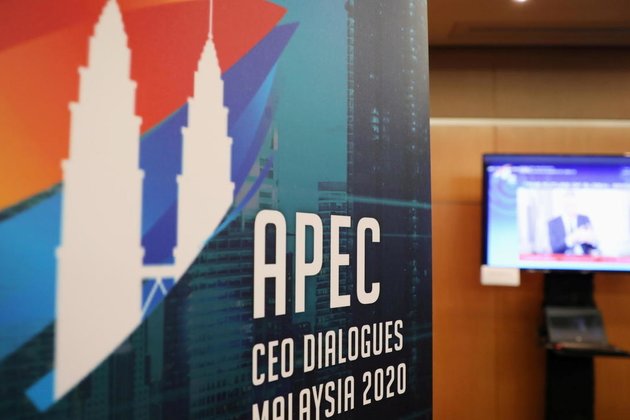Move FM Australian News

U.S. President Trump makes virtual appearance at Apec meet
Nov 21, 2020Leaders from the Asia-Pacific Economic Cooperation (APEC) forum held a virtual meeting on Friday to discuss ways to revive their coronavirus-battered economies with U.S. President Donald Trump participating for the first time since 2017.
The leaders’ meeting was also the first since 2018 after last year’s host, Chile, canceled the annual summit due to violent domestic protests.
The leaders adopted the APECPutrajaya Vision 2040 a policy document that paints the partnership’s ideas in broad but vague terms, while stressing the importance of playing according to the rules of the World Trade Organisaiton (WTO.)
Trump’s participation came as a surprise as he challenges the outcome of the U.S. presidential election, won by Joe Biden. Last weekend, Trump skipped the East Asia Summits and withdrew from speaking at an APEC CEO meeting earlier Friday.
This year’s host, Malaysian Prime Minister Muhyiddin Yassin, said APEC, whose members account for 60% of global GDP, has a central role in spearheading the post-pandemic economic recovery.
“We need to trade and invest our way out of the current economic downturn. We must come together and work constructively towards navigating the region along a path of robust, inclusive and sustainable economic recovery and growth,” he said in his opening remarks.
Muhyiddin urged nations to stay united in combating COVID-19 and ensure that vaccines and health technologies are made affordable and accessible to all.
“The last time that Trump attended Apec he sang the ‘unilateral America first’ song, when everybody else was singing multi-lateralism,” Carlyle Thayer, of the Australian Defence Force Academy, told RFI.
APEC leaders are expected to discuss new development goals for the next 20 years, replacing what is known as the Bogor goals that were named after the Indonesian town where leaders agreed in 1994 to commit to free and open trade and investment.
Earlier Friday, the leaders of Japan and New Zealand warned countries against the temptation of retreating into trade protectionism.
Two parallel structures
APEC stands for a larger free-trade philosophy, but it is up to the member states to give flesh out the details of what it means in practical terms.
This is starting to happen, but already two structures that are emerging within APEC reflect the growing rivalry between China and Washington: the Regional Comprehensive Economic Partnership (RCEP) and the Trans Pacific Partnership (TPP).
RCRP was first launched in 2012 by ASEAN and six of its partners, including China, Australia, India Japan.
As a reaction the U.S. started to aggressively build on another structure, the TPP, that was first initiated by Brunei, Chile, Singapore and New Zealand in 2005.
In an attempt to create a single market for the U.S. and 11 countries that border the Pacific Ocean, including Canada, Mexico, and Chile, Washington jumped in. The TPP in its new form was proposed by US President Barack Obama and signed in February 2016.
Dominance
But its main goal was to maintain U.S. trade dominance in Asia, and warding of China’s growing influence by excluding Beijing TPP membership.
“Then Trump comes along and pulls the U.S. out of the TPP,” says Thayer.
“And thus isolates himself as he doesn’t join the RCEP. Therefore, the U.S. is not a multilateral player.”
Trump said the TPP was a “disaster pushed by special interests who wanted to rape our country [the U.S.].”
Bernie Sanders and Hillary Clinton may have also given in to criticism that the TPP would bring vast profits to companies without the obligation that those profits translate into jobs or better salaries.
Cornerstone
This time around, Trump cancelled a speech he was scheduled to make at the APEC CEO forum at the last minute. It was Chinese President Xi Jinping who took the center stage on Thursday, dominating the conference with a keynote adress.
Also speaking by video link from Tokyo to the meeting of Apec CEOs, Japanese Prime Minister Yoshihide Suga said a “free and open Indo-Pacific will be the cornerstone for the prosperity of this region.”
Japan and 14 other Asian neighbors on Sunday signed the world’s largest free trade agreement, the Regional Comprehensive Economic Partnership. Suga, who took office in September, said Japan will next push for a wider free trade pact among the 21 members of the Asia-Pacific Economic Cooperation.
“Amidst a risk of inward-looking temptations in the face of the slump of the global economy, making rules for a free and fair global economy is critically important,” he said. “While continuing to promote WTO reform, Japan will aspire for the Free Trade Area of the Asia-Pacific.”
New Zealand Prime Minister Jacinda Ardern, who spoke to the CEOs after Suga, voiced hope that APEC leaders will agree on a growth vision that focus on free trade, digital innovation, and sustainability and inclusion.
“As we confront this generation’s biggest economic challenge, we must not repeat the mistakes of history by retreating into protectionism. APEC must continue to commit to keeping markets open and trade flowing,” she said.
APEC brings together Australia, Brunei, Canada, Chile, China, Hong Kong, Indonesia Japan, South Korea, Malaysia, Mexico, New Zealand, Papua New Guinea, Peru, Philippines, Russia Singapore, Taiwan, Thailand and the United States.
(With AP)


